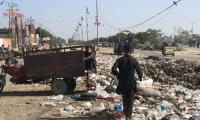As we discussed in our previous article in these pages – ‘Post-Covid learning’ (June 23) – the post-Covid classroom will be one of a very different design and structure than conventional classrooms.
This was dictated by the changing pedagogy of teaching, which in turn was being driven by technological opportunities. We also discussed how countries and regions which did not have an enabling environment for technology – they were ‘underprivileged’ – would actually be harmed as a result of the investment in technology because they would not be able to fill the resource gap.
In this article, we would like to discuss this issue in greater depth because the current thinking is to assume that technology is the future. Be that as may be, without a concomitant allocation of resources to other aspects of learning like infrastructure, human resources, curricula, and quality control, technology will not bridge the gap between haves and have-nots: rather, it will exacerbate it.
As part of Unesco’s Sustainable Development Goals, 2030 member countries had agreed to “invest” between 4-6 percent of their GDP on education. However, many, especially the poorer ones, have failed to do so. The term ‘investment’ is used because it is a fact that education fosters growth, development and equity. The absence of fiscal commitments makes the Unesco goals even more critical because far too often, education has suffered from budgetary rationalization: defence expenditure, debt servicing and administrative expenditures to support a bloated bureaucracy have all eaten into resources available for education.
Those who have taught in an ‘underprivileged environment’ will be aware that education is considered to be the primary means for transiting across socio-economic barriers. For example, investment in primary education, especially that of women, has a negative correlation with fecundity, and consequently, is a most effective tool to reduce family size.
This in turn impacts positively on maternal and family health, which increases economic well-being, especially among the less privileged socio-economic groups. Investment in secondary education provides opportunities for those members of society who do not have access to resources. This creates economic well-being, productivity, enhanced human dignity, and increases their contribution to the socio-economy. Thus, investment in education allows societies to bridge economic resource gaps, permeate new ideas and innovations, and make optimal use of technological processes, which are the basis of the new ‘industrial revolution’.
In the past, public education was considered to be a great leveller: there was classroom equality in terms of access to resources, regardless of intrinsic socio-economic disparities in their everyday lives. But with the current pandemic, the traditional avenues for provision of education services has meant a shift towards alternative platforms of technology in the classroom. This creates numerous new opportunities to rejuvenate the classroom experience which was required regardless of the onset of the pandemic. But as we have found, a move towards greater technological absorption carries some serious concerns as well. Here are just a few of them.
First, if the providers of the service are not trained to assimilate learning with technology then they are in no position to develop new pedagogies. Human capital – in this case teachers – is constrained by lack of training. In the environment we experienced, teachers did not need certification for their professions. The jobs in government schools were virtually guaranteed for life. In the private schools, there was no systematic provision of training for teachers. The absence of a government-mandated certification implied an absence of consistent quality standards and for imparting training on new ideas and innovations in the industry.
Second, we had to deal with multiple education systems, including British, American, International Baccalaureate, traditional matriculation. To confuse matters more, the most common national matriculation system was taught in two mutually exclusive languages. Regionally, standards varied greatly to the detriment of the students and their future prospect. This disparity – a gap in equality – cannot be rectified by simply throwing technology at the problem.
Third, the national matriculation curriculum was out of date and irrelevant to the modern marketplace. Handed down by the authorities, the curriculum revealed major shortcomings in accuracy, context, syntax, and language: wrong solutions to mathematical equations, inaccurate historical facts, linguistic anomalies, and intolerant language. To adapt to the exigencies of the post-Covid-19 educational environment would require a complete restructuring and reorientation of the system.
Fourth, public-private partnership is viewed as an essential component – almost a panacea – for the future of education. But this view is simplistic so far as it applies to our discussion. In resource constrained environments, the private sector’s entry into education was presaged by the abandonment of governments’ commitment to providing a public good. The private entities which have entered the sector have converted it into a for-profit market-driven industry. This has made learning less accessible and affordable to the people. Private institutions would have more access to technological resources, which would widen the gap between the haves and have-nots
In conclusion, when addressing the issue of inequality resulting from the pandemic and what challenges this will create in environments which do not have strong support systems for education, we wish to highlight the concerns that should be flagged.
In particular, as we engage in new initiatives in education – ‘the new normal’ – which are specifically using digital interfaces to complement traditional face-to-face learning pedagogies, we want to ensure that our attempts enhance equality rather than falter due to technological and other resource gaps.
The writers are freelance contributors.
After November 30, it will be impossible for ordinary internet users to access all banned websites, including X
Muslims participated alongside their Hindu fellow villagers and other residents of area
For last eight years, HEC's budget has been virtually stagnant in absolute terms
Home to 14 million people, Lahore has always been celebrated as Pakistan’s historical, culinary, and cultural hub
Partnership between Pakistan and China in media and culture reflects shared commitment to strengthening bilateral...
This article focuses on single error committed by our respected judiciary which haunts me more than I would care to...







